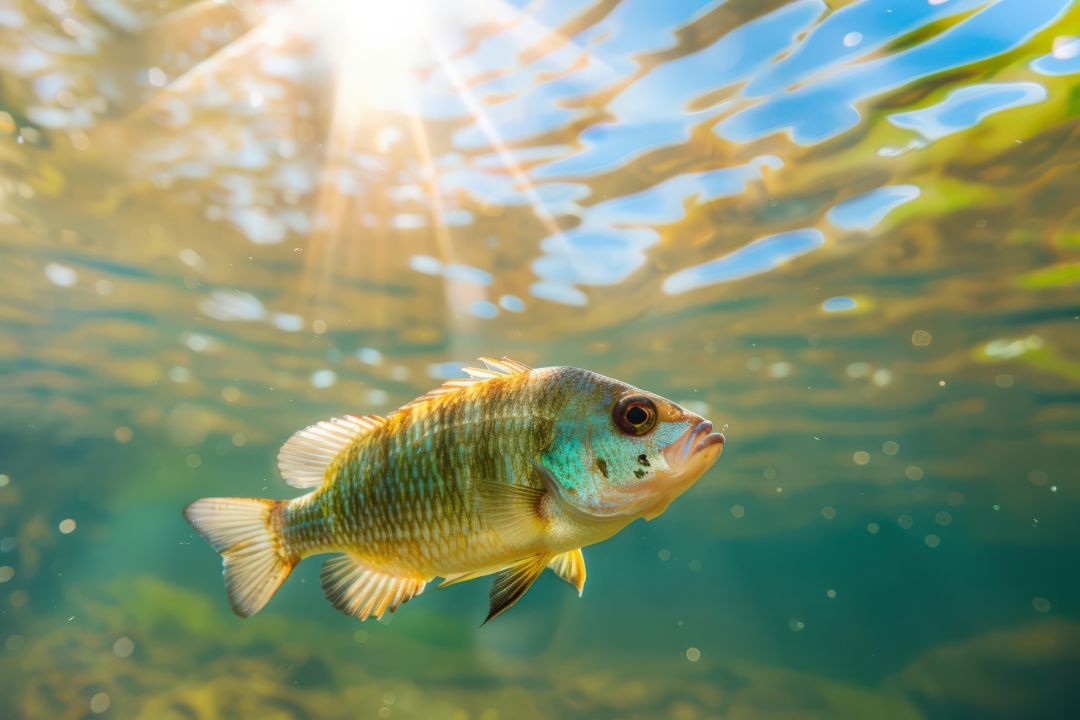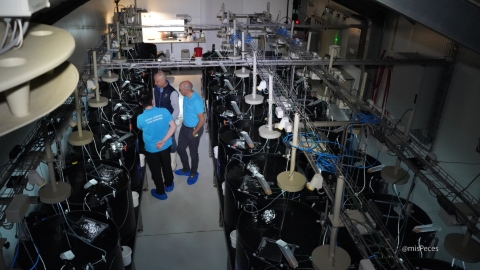
In a well-managed aquaculture farm, feed accounts for 50% to 60% of total costs. With further optimisation, this percentage can rise to 70%. This makes sense because other costs, such as oxygenation, labour and energy inputs, decrease in relative weight, indicating that feed has reached a level of efficiency where the nutritional needs of the fish become the main investment factor.
Improving both the price and performance of feed is therefore crucial. The most common strategy is to look for cheaper protein sources to replace traditional proteins such as soy and fishmeal, which provide energy and growth.
However, in species such as Nile tilapia (Oreochromis niloticus) and other farmed fish, an innovative strategy addresses the issue of feed cost by increasing the use of carbohydrates.
A recent study conducted by researchers at Suranaree University of Technology in Thailand, in collaboration with INRAE (Institut National de la Recherche Agronomique) in France, has shown that replacing protein with carbohydrates as the primary energy source is not only feasible, but works well in both juvenile and adult tilapia.
The initial hypothesis was that, as an omnivorous fish, tilapia would use carbohydrates efficiently in its metabolism, using them for glycolysis (energy production) and lipogenesis (fat storage). Thus, a proper balance between carbohydrate and protein could reduce costs while improving the health and adaptability of the fish.
n this study, researchers analysed the effects of refeeding juvenile and adult tilapia after periods of fasting with diets containing 'low' or 'high' levels of carbohydrates.
The results suggest that carbohydrates can serve as a more efficient primary energy source, allowing proteins to be used for tissue synthesis (i.e. growth) rather than being metabolised for energy. This approach not only helps to reduce the unnecessary use of expensive proteins, but also promotes faster and healthier growth in the fish.
Another result of the study was that fish showed a rapid recovery of body weight after periods of fasting followed by refeeding on a high carbohydrate diet. This finding is particularly relevant in common aquaculture situations such as fish transport or periods when fish cannot be fed.
Experiment Design
As explained, the experiment was designed to understand the metabolic response of tilapia to different proportions of carbohydrate and protein after a period of fasting. First, the fish were acclimated for 14 days under controlled conditions and fed a standard diet. They were then fasted for 4 days to simulate typical stress situations in aquaculture. After this period of deprivation, the fish were divided into two groups: one fed a low carbohydrate, high protein diet and the other fed a high carbohydrate, low protein diet.
The experiment included both juvenile and adult tilapia, allowing the researchers to observe how fish at different stages of development metabolise carbohydrates. Various parameters such as body weight, blood glucose, triglycerides, cholesterol and protein levels, as well as the chemical composition of liver and muscle, were monitored throughout the study.
Implications for Aquaculture
The researchers observed important differences between juvenile and adult tilapia when fed low or high carbohydrate diets after a period of fasting. While both groups were able to recover weight efficiently, adults showed a greater tendency to accumulate fat in the liver and muscle when fed a high-carbohydrate diet. In addition, the expression of genes related to glycolysis and lipogenesis was more pronounced in the adults, suggesting that this group uses carbohydrate more efficiently as an energy source and reduces its reliance on protein for energy metabolism.
These differences have important implications for the design of specific diets for tilapia at different stages of development.


